Main Idea and Supporting Details | Examples and Activities
Main idea = “what it’s all about”
Supporting details = “pieces of information”
Teaching these key concepts to children can boost their reading and writing skills and help them better understand and produce written language.
This page contains examples and activities for teaching the concepts of “main idea” and “supporting details” to children. Find easy-to-understand descriptions and scaffolded lesson ideas to support student learning.
What are Main Ideas and Supporting Details?
This learning guide will demonstrate how to help a child learn to identify main idea and supporting details in a written text as well as to include them in their own writing. We’ll provide examples and definitions along the way.
We use “main idea” and “supporting details” when we are reading books or texts to help us understand what we read. We also use them when we create our own writings so that others understand what we are writing. We even use these concepts in conversation when we are talking to others. We might tell a person the topic of our conversation at the beginning to help them understand what we’re going to talk about (example: “I got a new video game this weekend!). Or, we might provide supporting details to explain why we feel a certain way (example: “I want to go to the pizza place for dinner because the food is good and they have arcade games to play while you wait”.)
Understanding how to identify the main idea and supporting details (and include them in our writing and conversation) can be hard for some children to grasp, especially those with other language delays. Fortunately, there is an easy path to helping children understand these concepts. Check out the steps below.
Main Idea Definition:
What is Main Idea?
The “main idea” is the topic or most important point of a writing, picture, or conversation.
Main Idea = What it’s about
Supporting Details Definition:
What are Supporting Details?
The “supporting details” of the text, picture, or conversation are the facts that tell you about the main idea
Supporting Details = Information about the Topic
Main Idea and Supporting Details Examples
Below, we have included many main idea examples and supporting detail examples. You’ll find that these examples are organized from easiest to hardest. Start with step one and walk your student/child through these examples to help them understand the concepts of main idea and supporting details.
Step 1: Identifying the Main Idea of Pictures
We can help a child understand main idea by identifying the main idea of pictures. Hold up a picture for the child and say “what’s the main idea of this picture?”. Start with pictures of single objects, like the apple picture below. Say, “Main idea means what the picture is about. What is this picture about?” The student should respond with “apple”.
Then, reinforce the idea of “main idea” by saying something like “You’re right, this picture is about an apple. That’s the main idea. When we talk about the ‘main idea’ of something, we’re talking about the topic. Or what the picture or writing is about.”
Next, show the student a picture of something slightly more complex, like the picture of the football game below. There’s a lot more going on in this picture but the topic or main idea is a football game. You can talk about all of the details that help you know that it’s a football game (though you don’t have to talk much about details yet, that comes later).
Continue showing the student pictures of scenes like this until the child can appropriately answer the question “what’s the main idea of this picture?” most of the time. Then, move on to step two.
Main Idea Example 1: Picture of a Single Object
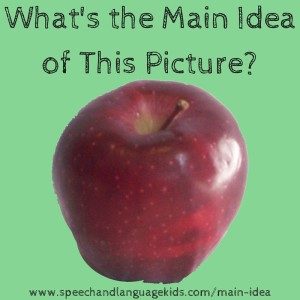
What’s the Main Idea of this Picture? Apple. This picture is about an apple. That’s the main idea.
Main Idea Example 2: Picture of a Scene
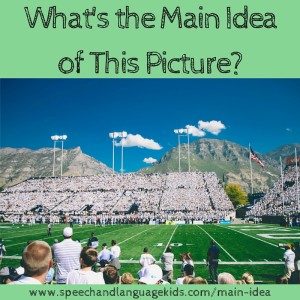
What’s the Main Idea of this Picture? Football game. That’s what this picture is about. I can tell because there are football players and people watching the game.
Step 2: Identifying Main Idea of Written Sentences
Now, write down a simple sentence for the student. You can write something like “Apples are delicious” or “Football is a fun sport”. Tell the student that you are going to find the main idea of each sentence. Remind them that the main idea is what the sentence is all about.
Ask the student to circle the word or words that contain the main idea of the sentence. Here are some main idea examples:
Main Idea Example 3: Main Idea of Sentences
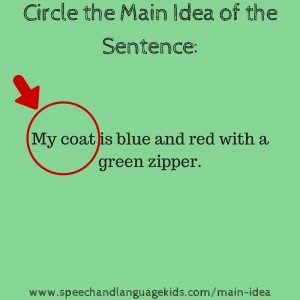
What’s the Main Idea of this Sentence? My coat. This sentence is about my coat and everything else in the sentence is talking about my coat.
Main Idea Examples in Sentences
Look at the main idea examples below, identify the main idea of each sentence.
- I love my dog very much.
- The grass is very green today.
- I know I’m hungry because my stomach is growling.
- Sometimes the class is so loud we can’t hear the teacher talk.
- Daylight Park is my favorite park because it has the tallest slide.
- My green sweater is very warm and cozy.
Step 3: Diagramming a Sentence into Main Idea and Supporting Details
Once the student is consistently able to pick out the main idea from a sentence, you’ll want to introduce the concept of details. Talk about how details are all of the pieces of information that tell us about the main idea.
Write down a sentence for the student and have him circle the main idea, just like before. Then, ask him to underline any details that give us more information about the main idea. Here’s an example:
Supporting Details Example 1: Identifying Supporting Details in Sentences
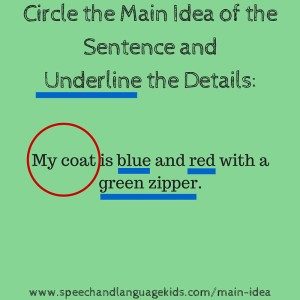
What are the Supporting Details of this Sentence? My coat is blue and red; it has a green zipper
Supporting Details Examples in Sentences
Look at the supporting details examples below, identify the supporting details of each sentence.
- I love my dog, named Roy, very much.
- The grass is very green today.
- I know I’m hungry because my stomach is growling.
- Sometimes the class is so loud we can’t hear the teacher talk.
- Daylight Park is my favorite park because it has the tallest slide and the biggest sandbox.
- My green sweater is very warm and cozy.
Step 4: Diagramming Paragraphs into Main Idea and Supporting Details
Once the student is able to correctly identify the main idea and a detail or two in a simple sentence, you can move on to doing the same activity in a paragraph. Give the student a short paragraph to read and have him circle the main idea and underline the details.
Here’s another example to help you out:
Examples of Short Paragraphs with Main Ideas and Supporting Details:

Main Idea and Supporting Details Example in Paragraph:
Here’s another one for practice. Identify the main idea and supporting details in the following paragraph:
The zoo is the best place to go for a fieldtrip. The zoo has many different animals that you can observe in their natural habitats. You can learn a lot about the animals at the zoo. There is also food at the zoo in case you get hungry while you are there. The zoo is big so there is plenty of room to move and play. We should go to the zoo on fieldtrips more often.
Step 5: Answering Questions about Main Ideas and Supporting Details
Now that the student is really getting the hang of picking out the main idea and details, it’s time for the student to start stating them in their own words. For this step, you’ll give the student a paragraph or a text. I recommend using a developmentally-appropriate text from his school work.
Start by having the student circle (or point to) the main idea and underline (or point to) the details. Then, ask the student questions about the main idea and supporting details of the text. You can say “what is the main idea of this text?” and “what does the text tell you about the main idea?”.
Tell the child to restate the main idea in his own words. Ask him to use a full sentence to describe the main idea. This may be something like “The main idea of this text is blueberries” or “Blueberries are my favorite food.”
Next, have the student write out the details that support the main idea. Again, help the student use complete sentences to describe the supporting details. These may sound like “Blueberries are sweet and juicy” or “Blueberries grow on bushes”.
Here’s an example of a graphic organizer that you can help the student use to collect information about text (included with the Language Foundations for Literacy Curriculum):
Step 6: Include Main Idea and Supporting Details in Writing and Conversation
Now that your student knows how to pull main ideas and supporting details when reading, see if the student can create his own main ideas and supporting details for writing.
Have the student create a word web with the main idea in a bubble in the middle of the page. Then, have the student write ideas down in connecting bubbles that will support the main idea. Each one only needs to be a few words. Here’s an example organizer from our Curriculum:
Once the student has completed the word web, have the student go back and write out the main idea and each detail in a complete sentence. Then, the student only has to put them in order and add transition words like “first, next, last” or “also, in addition”.
And voila! A beautifully written paragraph with a main idea and supporting details!
You can also use this idea to help a child understand how to include main ideas and supporting details in his/her conversations. Record a conversation with him and then play it back to help him hear whether or not he clearly stated the main idea and supporting details so that others could understand what he was talking about.

About the Author: Carrie Clark, MA CCC-SLP
Hi, I’m Carrie! I’m a speech-language pathologist from Columbia, Missouri, USA. I’ve worked with children and teenagers of all ages in schools, preschools, and even my own private practice. I love digging through the research on speech and language topics and breaking it down into step-by-step plans for my followers.
Fun Fact: My favorite author is Brandon Sanderson. He writes fantasy books in a bunch of different worlds but when you put them together, they create a bigger picture. I’m Team Hoid all the way! Can’t wait to see what that crazy world hopper does next!
Connect with Me:
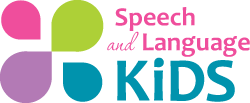
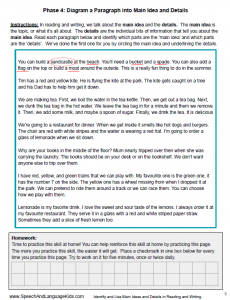
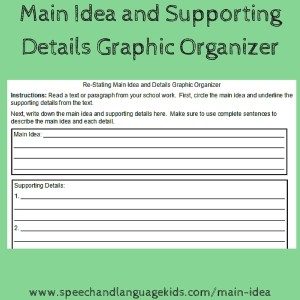
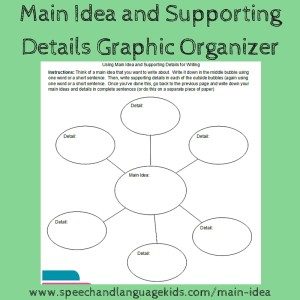

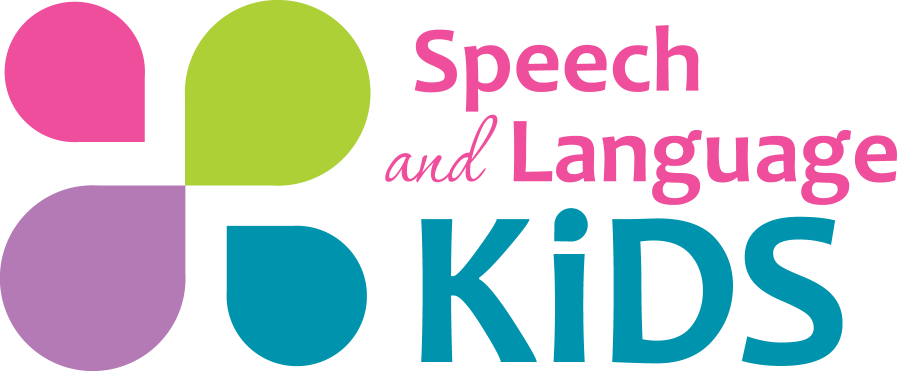
Thanks so much! Perfect timing for one of my students. I have done some similar things with a student who struggles with the main idea. Your breakdown of each of the steps, along with the visuals, is so helpful. And the extra resource you provide is a lovely, convenient help.
Wonderful! I’m so glad this will help you!
I love the way you started out with pictures. I have never thought about the main idea of a single picture. This breakdown and progression makes so much sense. Thanks for the ideas.
No problem! I’ve definitely worked with a lot of little ones who really need things broken down to the smallest possible step so I’ve grown accustomed to finding it in whatever skill we’re working on!
Hi, i liked your article, how do we teach this for a kid who still doesn’t know how to read.
This skill is mostly targeted at those students who are expected to identify and use main ideas and supporting details in their reading. I can’t really think of an academic activity where a student would need to identify the main idea and supporting details from someone’s speech or from something visual. Can you tell me what exactly you would be working on that would involve this skill without literacy?
How about oral narratives/disorganized narratives?
My mom always checks my work and.she says that I have to do a lot of sentences
Thnks alot.
I like the picture idea. BC start with the pictures.
My wife and I have been thinking about finding some pediatric speech therapy for our daughter, and I think that getting the most information we can would be good. I’m glad that you talked about being able to state the main ideas and details to help her start her saying things in her own words. I’m going to have to see if we can find some good speech therapy services, and help our daughter! Thank you!
Help me to teach students kid properly
Hi, Joseph-
Do you have a particular question that I can assist you with?
OOF
You are actually identifying the subject and supporting details. The main idea is the combination of both. The subject is the “coat,” the details described the coat such as “blue” and “fuzzy”. The main idea is “a description of my new coat”. I like the activity and think it would work great in helping kids, especially those who need more visual supports!
Thanks for the support and feedback, Heather! Please let us know if we can help in any way.
This explanation is a great source of teaching students on how to identify main ideas and supporting details. I have a question. How to find the main idea in a paragraph? If I asked, what is this paragraph mostly about? I would get TOPIC, but not the main idea. How to ask to myself in order to find a main idea in a PARAGRAPH? Thank you.
Hi I am new student English classes I want to know what is different between detail and supporting idea may you show me one a clear example ? Thankyou for your training Sara
May you show me one example about sharing of food on social media or on blogs . Write a topic sentences and three supporting idea and detail ? Thankyou again
could you please provide the answers for the details in each sentence? Im struggling.
I believe that you are confusing main idea with topic. The topic is the focus or subject of a text, which can usually be described in a few words, not a complete sentence. The main idea is what the author wants the reader to know or understand about the topic, also stated as the most important idea. In your example, your new coat is the topic, not the main idea. I would say that the main idea may be that your new coat has a lot of nice features. The key details to support the main idea would be that it is green, it is fuzzy, it has a snowman on the back, etc. This is tricky, especially with certain ages and the texts being used. I think it’s easier to determine topic, main idea, and key details in a multi-paragraph text as opposed to a single paragraph. It’s also challenging because Common Core State Standards don’t address main idea until third grade, so students become confused when they have heard topic used to describe the actual topic and also the focus of paragraphs (main idea).
I’m not able to upload the email details to get the main idea and supporting details freebies. Request you to share on sonal.gala@chembur.tgaa.in. Thanks in advance.
Hi, Sonal-We have emailed you the Main Ideas and Supporting Details worksheets. Please let us know if you need anything else.
Thank you so much, my 3rd grader daughter now understands how to find the main ideas and supporting details and myself I have learned something
You are so welcome, Bijoux! Thank you for taking the time to share!
Hi !! This is a little useful for me ….Can you please do *main idea, supporting details and concluding sentence* about book please ? THANK YOU !!!!
You can email the main idea, supporting detalis and concluding sentence on venuthkumar0808@gmail.com